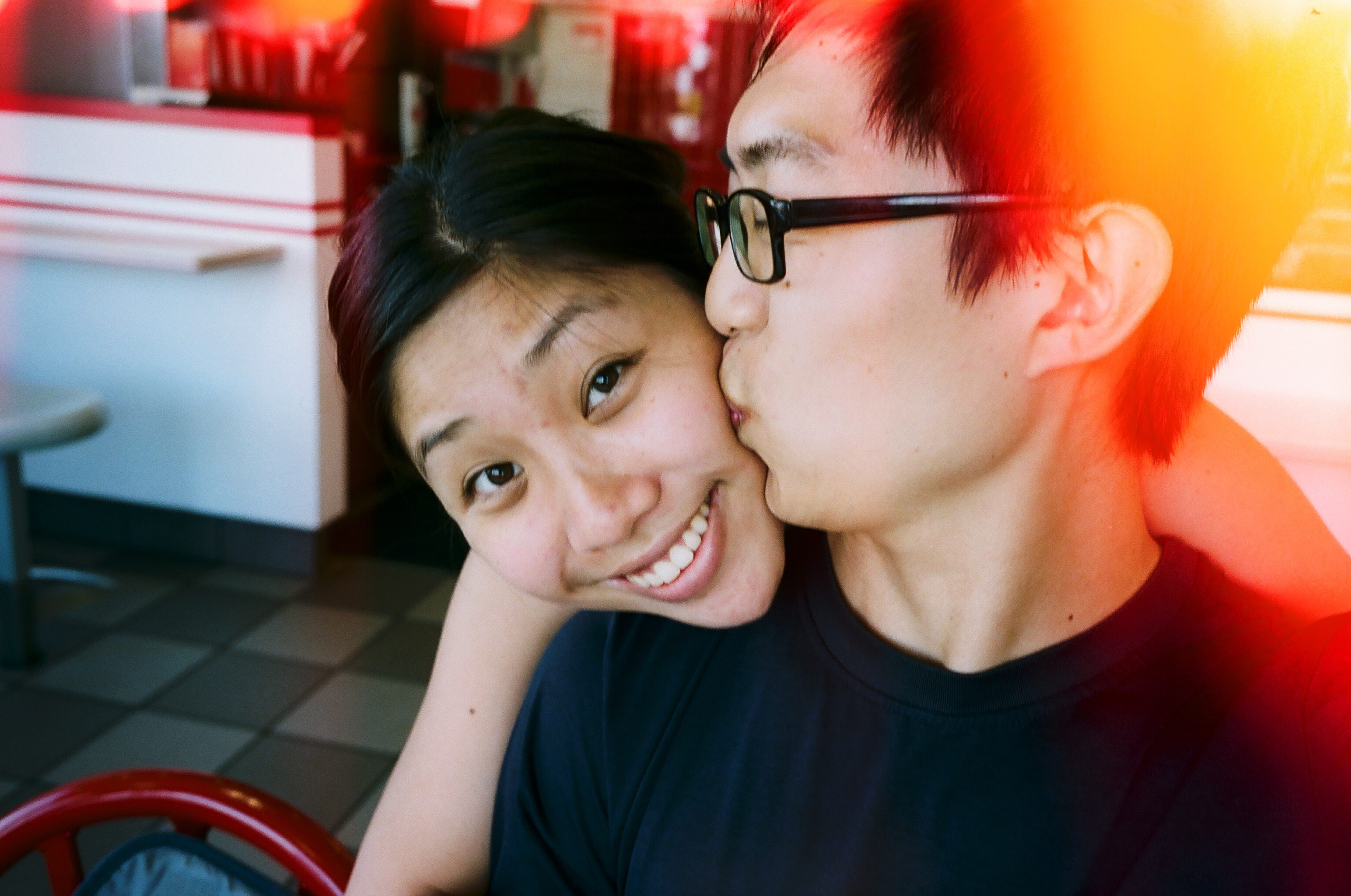A thought: try to shoot photos of your loved ones on film.
Why?
Well; to be frank, aesthetically film looks way better than digital. Or if you shoot digital, shoot in RAW, and process your photos with VSCO presets (or free ERIC KIM PRESETS).
Ultimately, photographing your loved ones is essential because it makes you appreciate them more. For the most part, you can only photograph your loved ones while they’re alive. To photograph them while they’re alive, you’re saying:
I’m so grateful that you’re still alive, and we can share this beautiful journey of life together.
On photographing death
Also on the other end, it is also important to photograph your loved ones when they pass away — like when I photographed my Grandfather’s funeral.
Time flies.
I’m pretty amazed; time flies so fast. I just turned 30 years old this year; I remember it was like the other day when I was 22 years old, when I started my blog in 2010. Also, I’ve been making photos for the last 12 years (from age 18 to 30).
The thing is this — I get a lot of great joy looking at my old photos, especially of my loved ones.
But when I look at all of my photos of my loved ones (especially Cindy); I prefer the photos I shot on film. Why? I think aesthetically film looks better than digital. They age better. Even when studying the work of the Magnum Photographers and master photographers — the old-school film photos look WAYYYY better than their new digital work. Of course once again the caveat is if you’re able to post-process your digital RAW files and make them look really good– this is different. This is why I’m such a huge fan of the Kodak Portra 400 VSCO presets, or the “A6” mobile preset on VSCO.
But once again, it doesn’t matter whether you shoot your loved ones on film, your phone, digital, whatever. Just make photos that bring a smile to your face; and try to post-process your photos in a way which evokes the love you felt when you shot it. For example some photos of my digital RICOH GR II which puts a smile on my face:
Recommended films
For color, I highly recommend KODAK PORTRA 400. Best colors and rendition. “Portra” means (Portrait) — so the film is optimized for skin tones, orange, and red colors:
Context
Also a suggestion: when you’re shooting, take a step back. Show a little context of what you’re doing with your loved one, and where you are!
For example, looking at these old photos of Cindy (around 2013-2014), it is so fun for me to see what our old life was like! For example, the old devices we used to own, what our old homes looked like in terms of decoration, or what point we were in our lives. And this is nice, because it gives us context/contrast, where I think to myself:
Wow, I am so grateful of our past life, but also even more grateful of how far we’ve come, changed, evolved, and grown!
File naming + Dropbox

Another practical suggestion: keep your photos well-organized in Dropbox and in files, and name them accordingly to easier find/index/search them.
For example, I keep all my film photos as JPEG scans, synced in Dropbox — I have no idea where the actual film negatives are.

For the files, I will name them like:
Cindy-project-kyoto-2013-kodak-portra-400-35mm-film.jpg
So if I just use the Mac Finder, I can easily find my old files.
Benefits of photographing loved ones on film:
- You don’t see the photos until a lot later (processing and scanning takes a long time); thus you are more likely to re-live positive experiences from the past! Whereas when you shoot a photo on your phone, you immediately forget about the experience.
- Aesthetically, the look of film will be more timeless. For example photos you shoot today (2018) on film, will probably look really good 10 years from now (2028), whereas photos on your iPhone might not look as good.
- Fewer photos to look through: With digital; the problem is that there are TOO MANY photos to look through! Shooting film will allow you to be more selective about the precious moments you desire to document. Thus, less future stress about looking through all these photos.
Conclusion
Pick up a copy of FILM NOTES (in our HAPTIC SHOP or on AMAZON), and start shooting film for yourself.
Also to get started, learn from all my film photography 101 articles.
Ultimately, just photograph whatever puts a smile on your face — and remember, look at your old photos from the past!
Smile,
Eric
Film 101

Take it back to the old-school: FILM NOTES by HAPTICPRESS x ERIC KIM.
FILM PHOTOGRAPHY by ERIC KIM

If you’re interested in learning how to shoot film, start with this guide:
- FILM PHOTOGRAPHY TIPS by ERIC KIM
- Film Street Photography Manual
- Introduction to Shooting Film in Street Photography
- What I Learned Shooting 100 Rolls of Black and White Film
- What I Learned Processing 164 Rolls of Film After Waiting a Year
- My Experiences Shooting Medium-Format Film in Street Photography
- A Guide on How to Shoot Street Photography on a Film Leica (or Rangefinder)
- Why Digital Is Dead For Me In Street Photography
- Video: Why I’m Switching Back to Black and White Film for Street Photography
- The Zen of Shooting Film Photography






















































































































